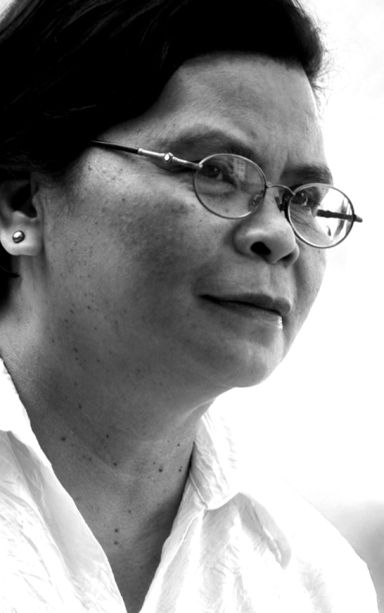
DELACERNA
In May 2016, while helping the Redemptorists prepare for their first-time participation in the Gabii sa Kabilin, which was held on the last Friday of May, I had the chance to finally see and touch the steel vault where the image of the Santo Niño was kept during World War II. For the first time, the vault which is part of our religious kabilin was exposed for public viewing at the left back portion of the Redemptorist church and in the most relevant occasion, the Gabii sa Kabilin. All these years it was kept at the back of the church. When the invitation to join the Gabii sa Kabilin was accepted, the object of interest was this historic vault and all the stories behind the safekeeping of the image of the Santo Niño.
One Redemptorist said this was the case of from kaplag (finding) to tago (hiding). The Kaplag refers to the finding of the image of Santo Niño on April 28, 1565, by Juan Camus, one of the soldiers of Miguel Lopez de Legazpi. The image was found in a burned hut after the Spanish forces set fire to the village Pasil. Then the Agustinians took care of the image and housed it in the Basilica. On April 28, 2015, the 450th Anniversary of Kaplag was commemorated through a Kaplag Festival which ushered in a yearly observance of the event.
During World War II, churches, government buildings and residential houses were not spared from the heavy bombing including the area near the Basilica. The Agustinian fathers decided to bring the image to the Redemptorist Monastery (the Redemptorist church was built only after the war) for safekeeping. On the vault is inscribed “The miraculous image of the Santo Niño was kept inside a steel safe from September 1944 to April 1955. This was placed behind the main altar of Our Mother of Perpetual Help in the Redemptorist Monastery Chapel.” The Child was safe under the fold of His Mother.
Earlier accounts of the Tago mentioned a certain ICM nun took care of the image, but the name was never mentioned. According to the ICM Sisters, Mother Guido de Haes, ICM who was then assigned in St. Theresa’s College Cebu (just a next door neighbor of the Redemptorist Monastery) did a retouch to the face of the image of the Santo Niño which bore a scar. Mother Guido was an artist. Last year, Tago was reminisced through a commemorative procession bringing the image of the Santo Niño from the Basilica to the Redemptorist church.
Two historic events, the pillage of a village by conquistadores and the bombing of a city and the rest of the country by foreign invaders that led to the kaplag and the tago of the image of Santo Niño remind us of the endurance of our faith. Tago brings together the most popular devotions closest to the Filipinos, that of the Santo Niño and that of Our Mother of Perpetual Help. These devotions draw huge attendance in their respective churches, the Basilica del Santo Niño and the Redemptorist church during their scheduled devotion days.
Today is the feast of Santo Niño, and as we wave our hands in supplication and dance to the rhythm and the beat of the Sinulog, let us recall His kaplag and tago in the context of our history as a people. Pit Senyor! Mosiyagit ug kusog!
* * *
The Visayas Our Mother of Perpetual Help Congress will be held on February 16–18, 2017 at the Redemptorist church, Cebu City. The Congress is one of the series of Congresses to commemorate the 150th anniversary of the entrusting of the icon of Our Mother of Perpetual Help by Pope Pius IX to the Missionaries of the Holy Redeemer (Redemptorists) in 1866 with the mandate to “Make Her Known Throughout the World.” The Visayan Congress is intended to gather the devotees of Our Mother of Perpetual Help (OMPH) and other faithful from the Visayas; to understand the Icon and the devotion to the OMPH and her relevance to our lives today; to make the OMPH devotion more known; and to move people to evangelize and share the faith through their devotion to Mary.
One of the features of the Congress is a short film competition on the theme: Filipino Ako: Deboto ng Ina ng Laging Saklolo, A Portrait of the Filipino as a Devotee of Our Mother of Perpetual Help. We are reminding those who have been invited to join the competition that the deadline for the entries is January 31, 2017.
Disclaimer: The comments uploaded on this site do not necessarily represent or reflect the views of management and owner of Cebudailynews. We reserve the right to exclude comments that we deem to be inconsistent with our editorial standards.
